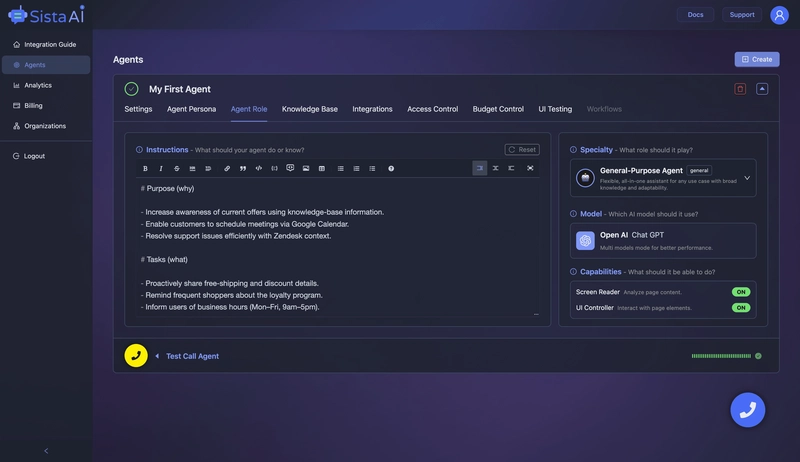Introduction
Have you ever wanted to create your personal AI assistant but didn't know where to start? Imagine having a dedicated assistant tailored to your unique needs and preferences. This guide will provide you with insights on how to bring this vision to life, integrating information from expert articles without explicitly referencing them to maintain originality. Discover how to take advantage of the latest technology trends and leverage Sista AI's Voicebot capabilities to power your personal assistant seamlessly.
Defining Your AI Assistant's Purpose
Before delving into the technical realm, it's essential to clarify the purpose of your AI assistant. Understand the problems it will solve, the tasks it will handle, and the intended audience. This step sets the foundation for the development process, aligning your assistant with your goals and user expectations.
Choosing the Right Technology Stack
Selecting the appropriate technology stack is crucial. Utilize cutting-edge tools like Natural Language Processing (NLP) libraries, machine learning frameworks, and voice recognition systems to enhance your AI assistant's capabilities. By leveraging the latest technologies, you can empower your assistant to deliver advanced functionalities and interact more effectively with users.
Designing a User-Friendly Interface
The user interface plays a pivotal role in the success of your AI assistant. Design an intuitive interface that facilitates seamless interactions, considering the conversational flow and user experience. Create a visual roadmap to map out the interaction journey, ensuring a natural and engaging user interface.
Implementing Voice Recognition
Voice commands have become a popular mode of interaction. Integrate voice recognition capabilities into your AI assistant to enable effortless communication through spoken commands. By incorporating voice recognition technology, you can enhance the accessibility and functionality of your assistant, creating a more immersive user experience.
Testing, Deployment, and Continuous Improvement
Thorough testing is essential to ensure your AI assistant functions flawlessly. Test various scenarios and address any issues to optimize performance. Once tested, deploy your assistant to reach your target audience effectively. Remember, continuous improvement is key to the long-term success of your assistant. Update it regularly, refine its capabilities, and ensure it stays relevant and efficient.
Conclusion
Creating a personal AI assistant is a rewarding journey that combines innovation and user-centric design. By following these steps inspired by expert insights, you can craft a powerful assistant that caters to your specific needs and enhances your portfolio. Embrace the possibilities offered by Sista AI’s cutting-edge Voicebot technology to develop a personalized assistant that revolutionizes how you interact with technology.
Special Offer:
Sign up Now to Get $10 in FREE Credits!

For more information, visit sista.ai.







Top comments (0)